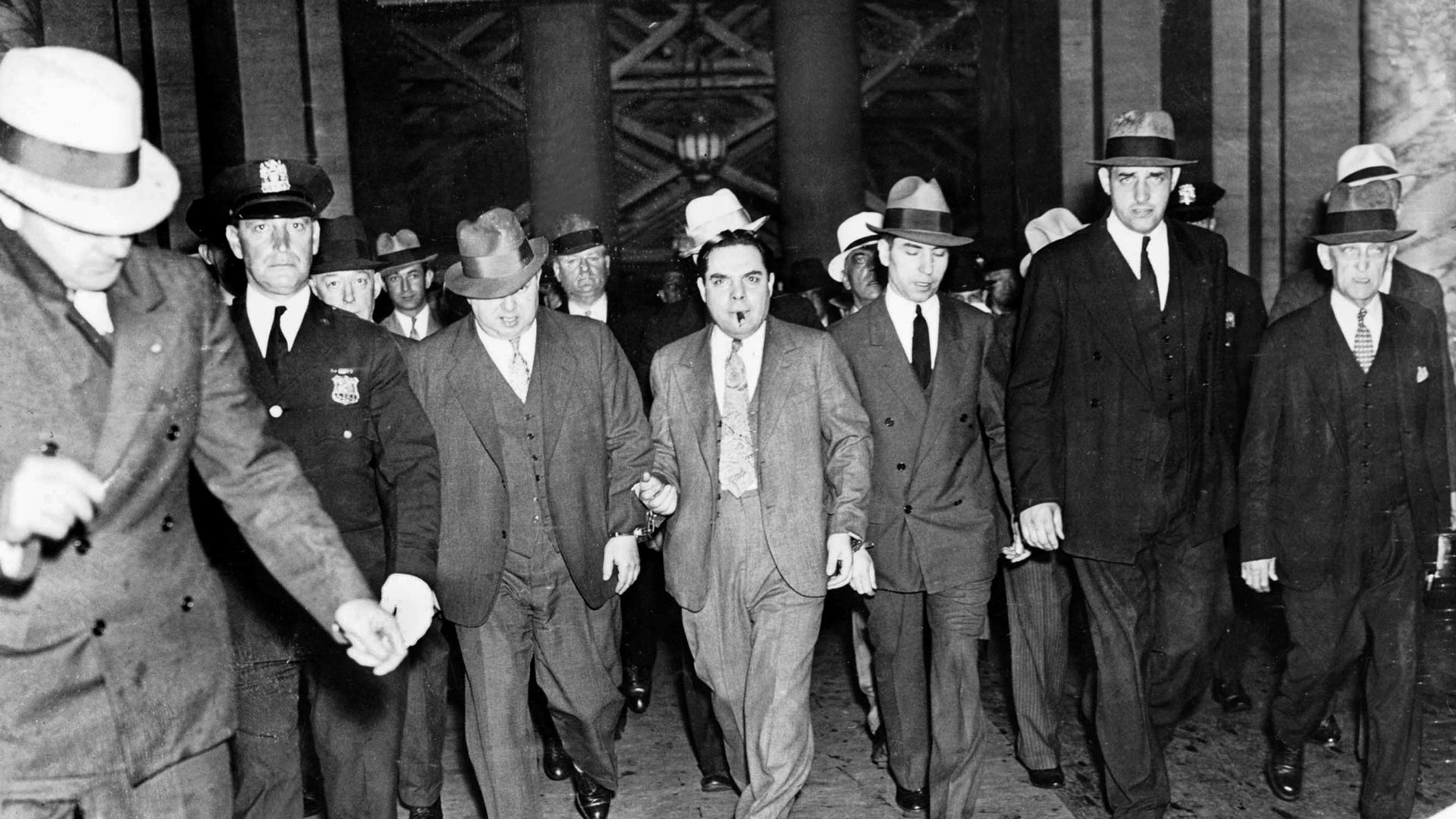The 8 Most Infamous Crime Families That Ruled New York’s Underworld for Decades!
New York City, often referred to as the city that never sleeps, has a dark history intertwined with organized crime. For decades, crime families have influenced the city’s politics, business, and society.
These families built empires through bootlegging, gambling, labor racketeering, and other criminal activities. Here, we examine eight of the most infamous crime families that dominated New York’s criminal underworld.
1. The Masseria Family
The Masseria Family’s reign was short-lived compared to other crime families, but its impact on the underworld was significant. Led by Joe Masseria from 1922 to 1931, the family mainly operated out of Manhattan.
They were heavily involved in the Castellammarese War, a brutal Mafia conflict between Masseria and Salvatore Maranzano’s family from 1930 to 1931.
However, things took a turn for the worse when Lucky Luciano, a former Masseria ally, ordered his assassination, signaling the family’s decline.
2. The Bonanno Family
Originally called the Maranzano family, the Bonanno Family took its name from its longtime boss, Joe Bonanno. Before Bonanno’s reign, Salvatore Maranzano led the family until his assassination in 1931.
Joe Bonanno became one of the most influential Mafia leaders, even writing an autobiography titled A Man of Honor.
This book broke the mafia’s traditional code of silence, revealing the secretive world of organized crime. The family was one of the infamous “Five Families” that dominated the city’s underworld for decades.
3. The Gambino Crime Family
The Gambino Family is one of the most well-known crime organizations, largely due to its notorious bosses. Salvatore D’Aquila initially led it, but it wasn’t until 1957, under Carlo Gambino’s leadership, that the family rose to prominence.
The Gambino family quickly became one of the dominant forces in organized crime in the United States.
Famous figures such as Albert Anastasia, Paul Castellano, and John Gotti all held leadership positions. Gotti, in particular, gained national attention for his brazen approach to criminal activities.
4. The Genovese Family
The Genovese Family is often considered the largest and most powerful of the Five Families. It was originally led by “Joe the Boss” Masseria, but after his death, Lucky Luciano took over and restructured the Mafia into what we now know as La Cosa Nostra.
Luciano’s influence extended far beyond the streets of New York. His leadership modernized organized crime, creating a national syndicate that spread across the United States.
5. The Luchese Family
The Luchese Family, named after its longtime leader Gaetano “Tommy” Luchese, made its fortune in the garment industry and other businesses.
The family was well-known for its involvement in labor racketeering. Lucchese worked closely with the Gambino family, solidifying their control over New York’s criminal landscape.
Though the family had two leaders before Lucchese took over, it was under his guidance that they became one of the major forces in organized crime.
6. The Colombo Family
Initially known as the Profaci Family, this organization was later renamed the Colombo Family after Joseph Colombo took control in 1963.
The Colombo Family was the youngest of the Five Families and suffered from significant internal strife.
Three bloody wars erupted within the family, weakening their power and influence. In the 2000s, numerous family members became government witnesses, further crippling the organization. Today, many see the Colombo Family as the weakest of the Five Families.
Read More: SNAP Update 2024: Everything New Yorkers Need to Know About Benefits Changes!
7. The Magaddino/Todaro Family
The Magaddino Family, also known as the Buffalo Crime Family, operated out of Buffalo, New York. Its influence extended beyond the state to parts of Pennsylvania and Canada.
Known for its involvement in bootlegging during Prohibition, the family transitioned to making money through gambling, loansharking, and labor racketeering after Prohibition ended.
They maintained strong connections with other crime families, such as the Luppino and Papalia families in Hamilton, Ontario.
8. The Masseria-Maranzano Conflict
The Castellammarese War, which pitted the Masseria and Maranzano families against each other, was a defining moment in Mafia history.
The war represented more than just a battle for power between two crime families; it was also a generational conflict between older, traditionalist mafiosi and younger, more modern-thinking members.
This brutal war reshaped the New York underworld and led to the rise of figures like Lucky Luciano, who played a pivotal role in modernizing organized crime.

